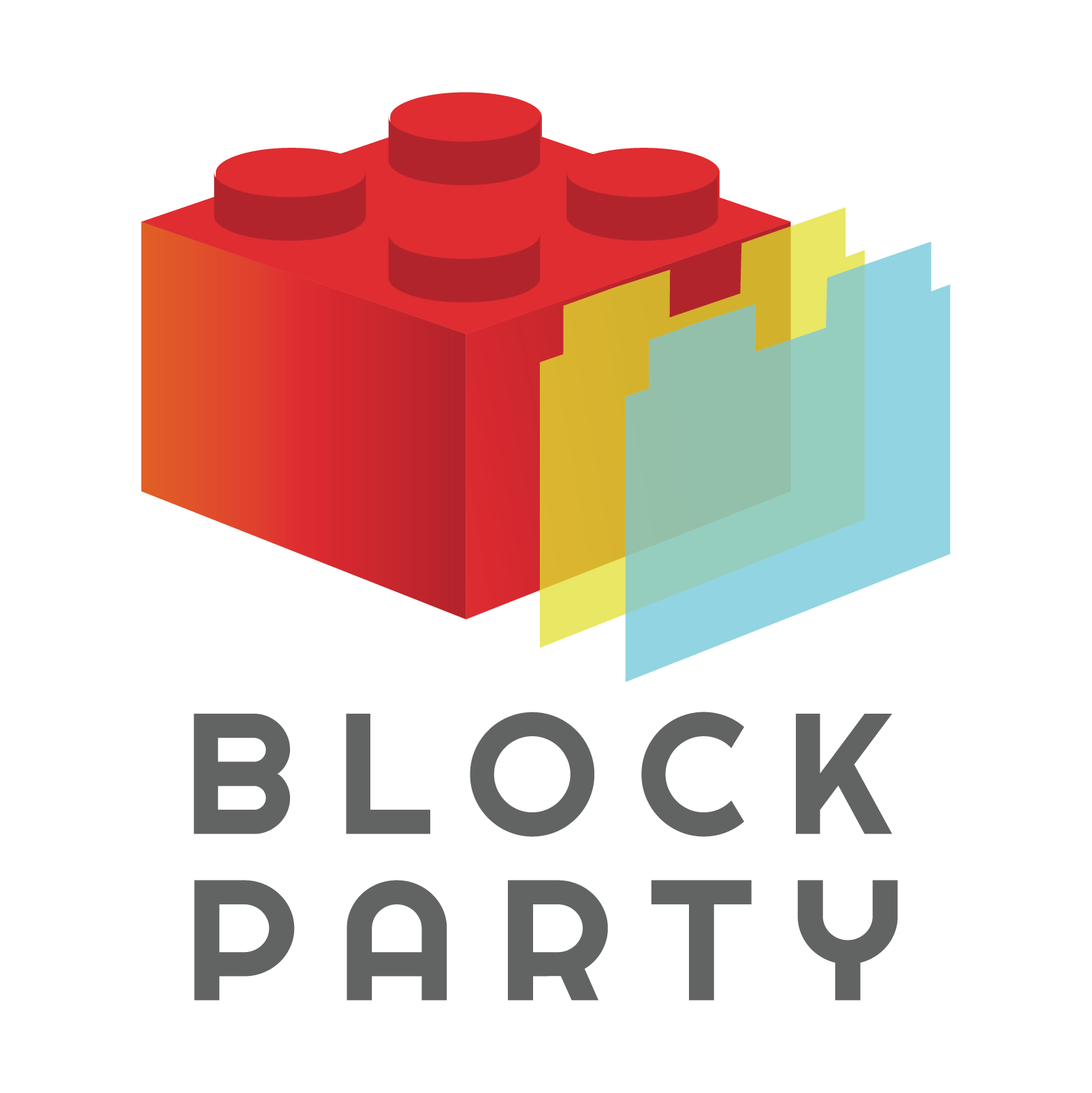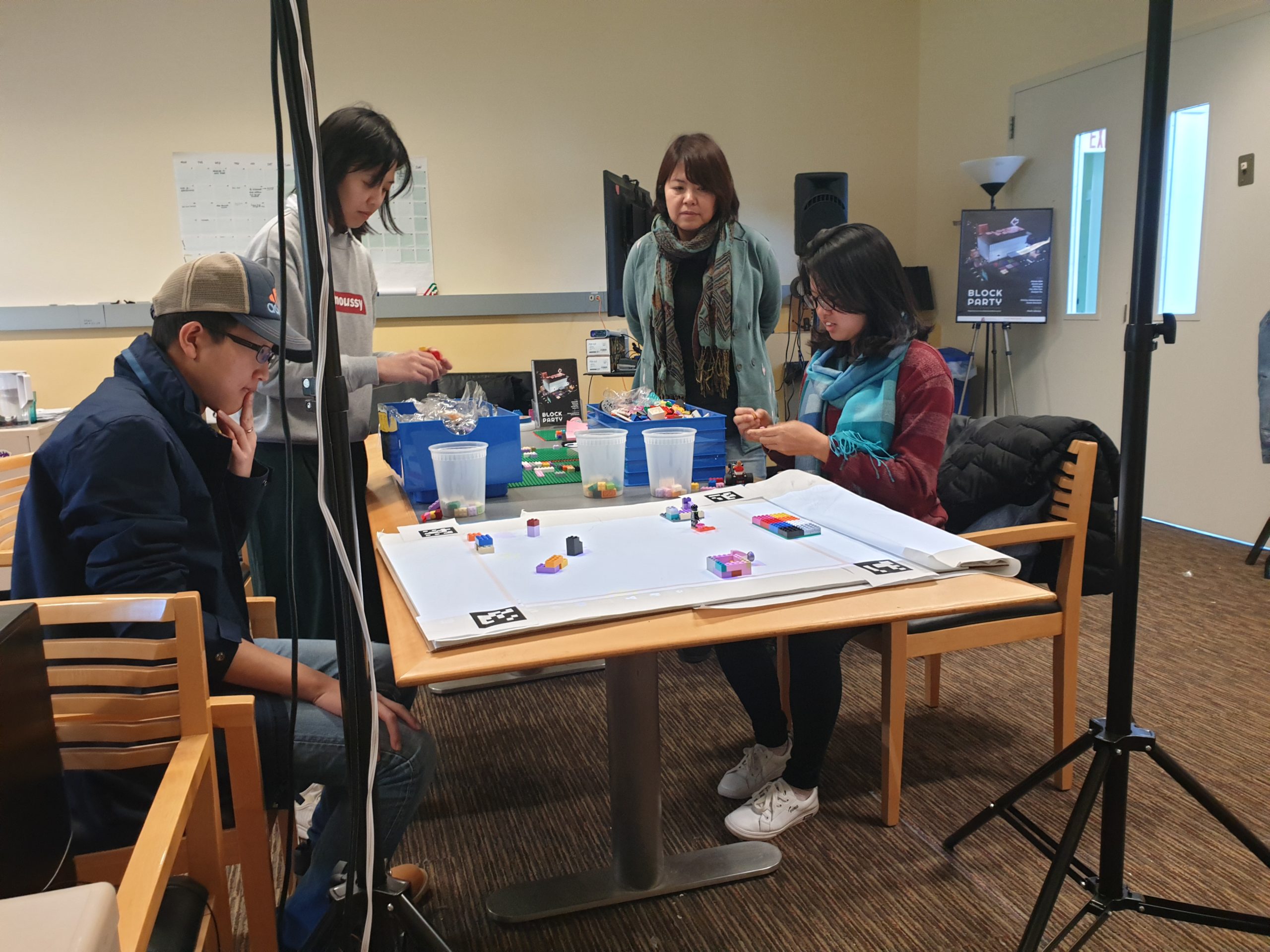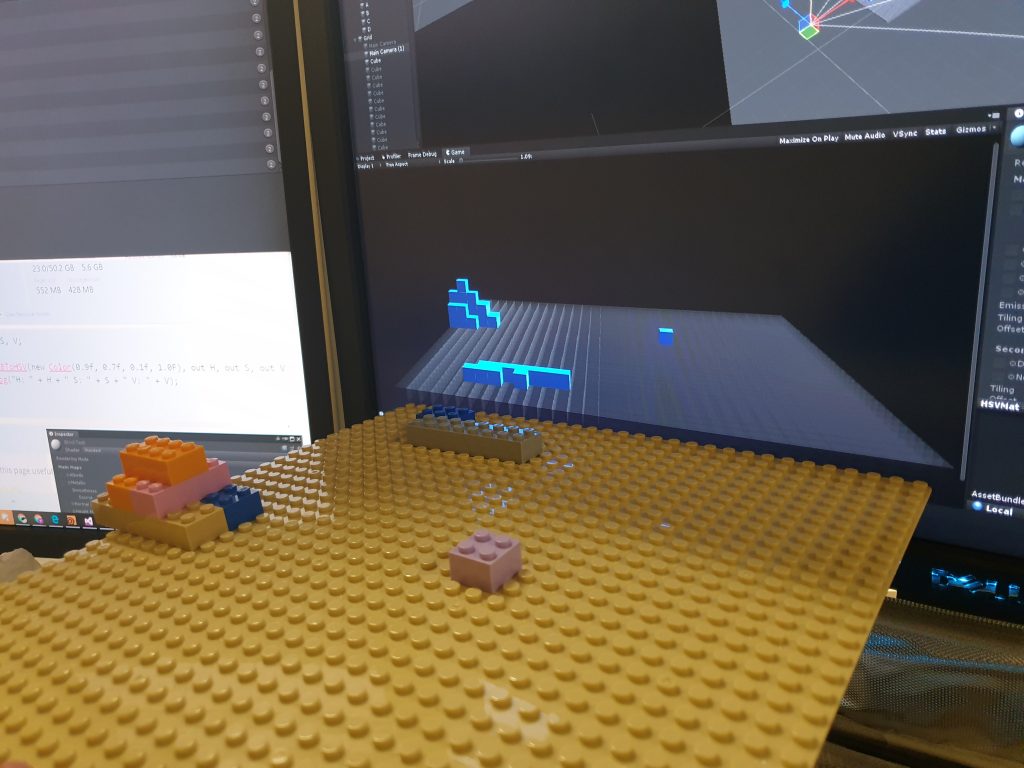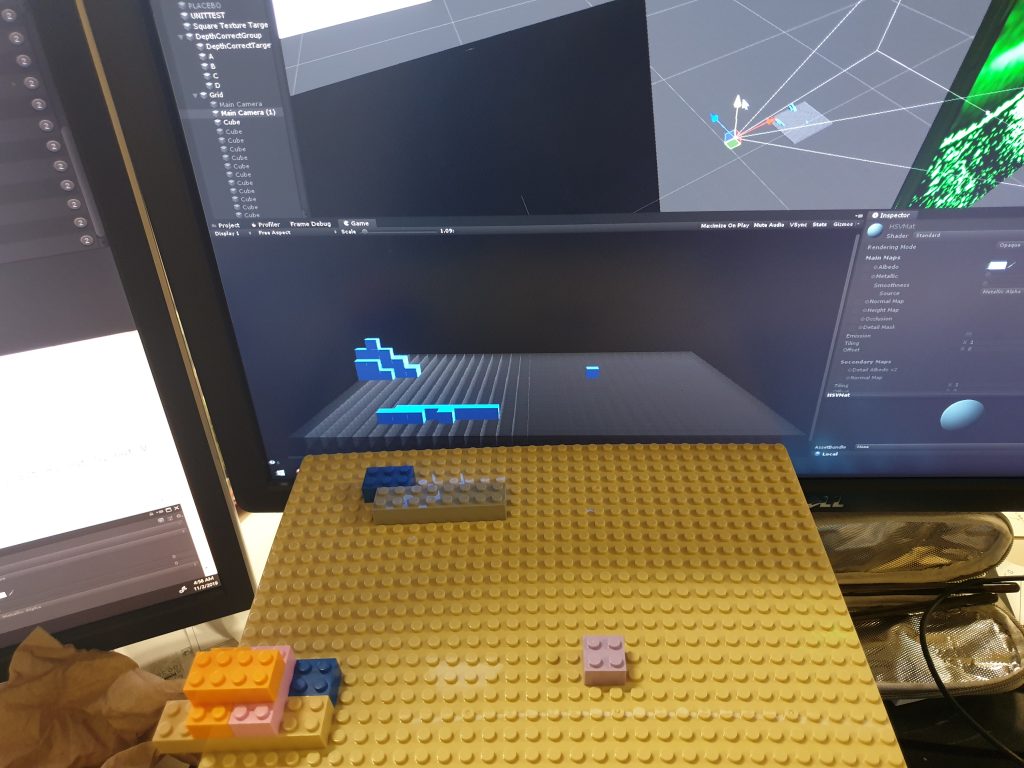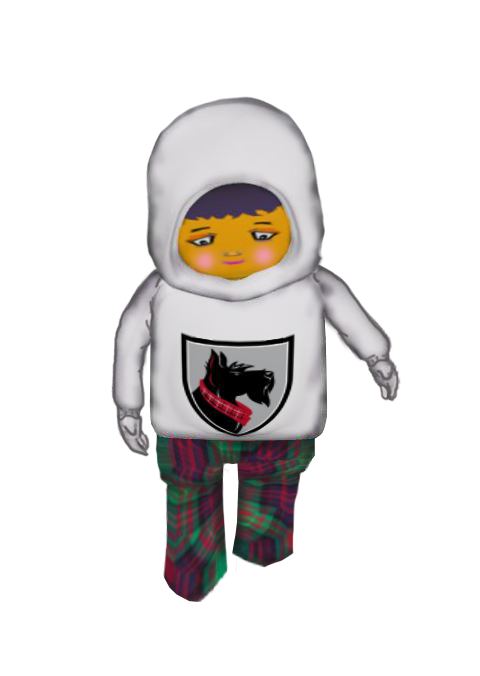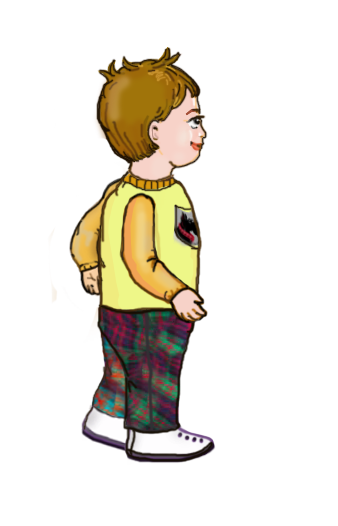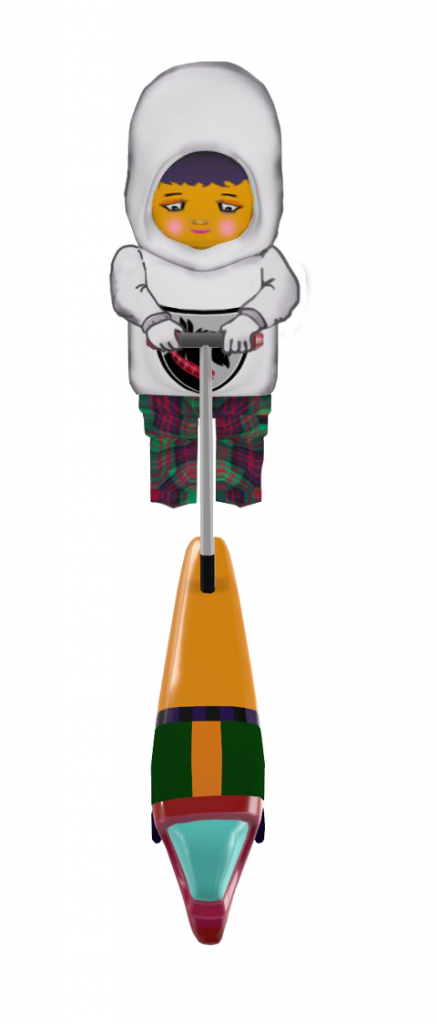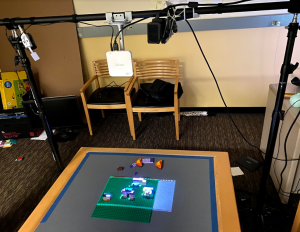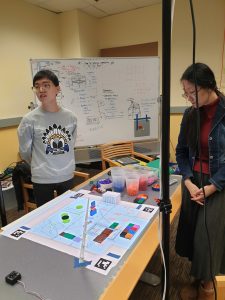This week was focused mostly on getting feedback from a variety of playtest groups, namely the Hunt Library team as well as visitors from the ETC-organized Playtest Day! We wanted to test our gameplay mechanics to understand where the fun elements were in our experience, and we wanted to see what sort of visual feedback would be required to understand the ‘rules’ of our virtual world. We knew that we wanted to create an environment where players would have to tinker and discover different effects of their LEGO creations, eventually understanding the system enough to create their own goals.
“Wizard of Oz”-style testing
Since we had both color and depth detection working, we could project the display of what was detected onto the play area. However, we had not implemented object detection – so our system doesn’t know which pixels composite a larger, coherent structure. So even though our game design required that every structure a player put down would spawn a certain object, our system couldn’t identify coherent structures just yet. As such, for this playtest, we had our programmers “Wizard of Oz” the playtest by manually placing the corresponding objects in the scene when players placed certain blocks.
Playtest Feedback
From both days of heavy playtesting, we realized that the top-down perspective with textured LEGO surfaces made it near impossible to tell what was going on, but the predictable movement pattern also was an inviting feature to let players know they could interact with the area. That said, people kept trying to trap the dog with LEGO blocks and also would put obstacles directly in the way of the dog (but too late for the camera to recognize what was happening). This felt ‘broken’, but we want to address this by having the dog character react to things that players place onto the board, rather than have the focus be to trap something moving at the last second, which gives the camera enough time to process what’s going on.
Also, we realized that not having a base board provided the visual feedback for the storyline, and players had fun messing with the dog character.
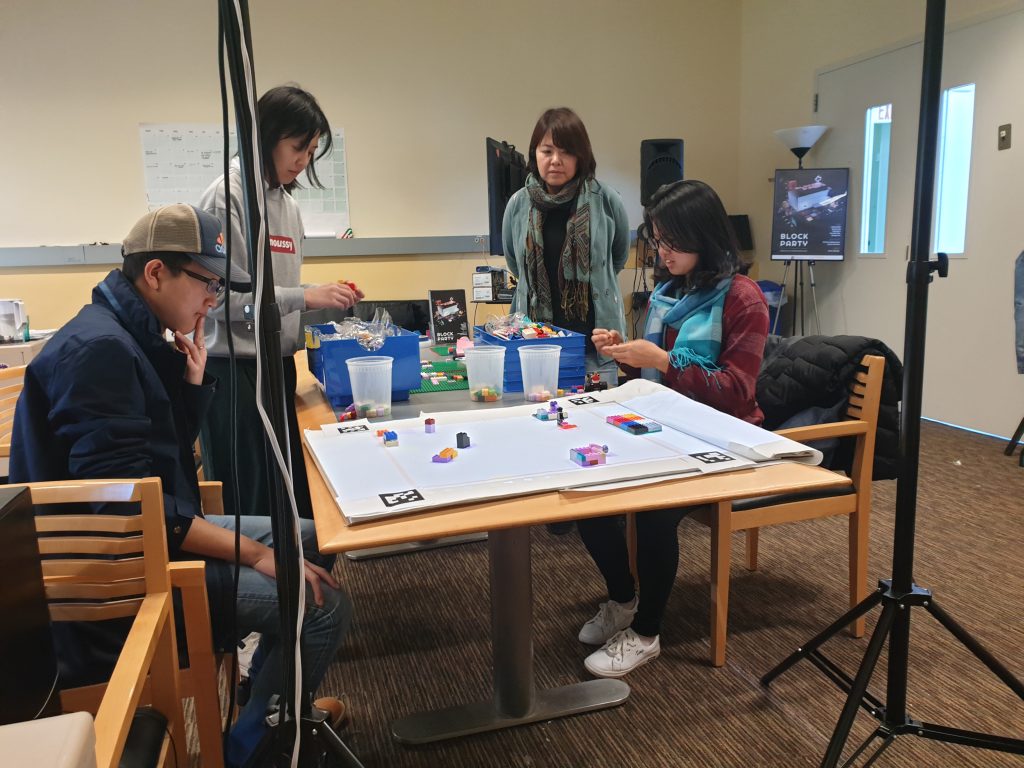
Another thing we noticed was that people would scatter loose LEGO pieces onto the board and not actually take the time to build their own LEGO creations, and we realize that we needed to include in our game design an incentive to build upwards. This meant that depth needed to have recognizable consequences in our game.
To that end, we considered using a screen as a mirror to provide some depth and show the corresponding structure in the virtual world of what players were building in the real world, kind of how it is shown below.
Finding a better theme
For the narrative design, we considered all of the things we had already made assets for (CMU Mascot Scotty, CMU Students, Buggies, and little stands/stalls) and combined them into the broader thematic umbrella of CMU Carnival, inspired by the yearly Spring Carnival on campus. Thus we are embarking on an art sprint for more Carnival themed elements, including consideration for a map/terrain design to help players understand where to begin.
